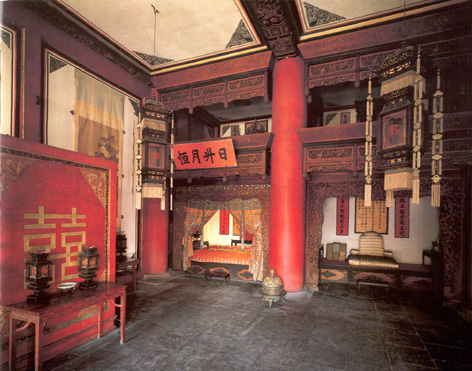The Grand Wedding of China's Last Emperor
Updated: 2007-06-04 09:03
The wedding ceremony for Chinese emperors is known as a grand wedding. Not every emperor had the opportunity to experience such a wedding. If the emperor married before ascending the throne, only a coronation ceremony would be held to bestow the title of empress on his bride. In the Qing Dynasty , only Emperor Guangxu, Tongzhi and the already deposed Emperor Puyi held grand weddings.
|
Related readings Elegant Collision between East and West |
Although the Qing Dynasty was already overthrown by the Republic of China 11 years previous in 1911, the Puyi still had an extravagant grand wedding. Zai Tao, the Beile, or lord, who was in charge of the grand wedding, decided to follow Emperor Tongzhi's example while adding new customs of the Republic. According to Puyi's own memoir, the wedding cost a total of 400,000 yuan, a large amount of money, collected by the Qing government by selling some of its most valuable treasures.
December 1, 1922 was the wedding day for China's last emperor Aisin-Gioro Puyi. Seventeen yearold beauty Wan Rong was wed to him as the last empress in China's history. The Directorate of Astronomy of the Qing government, whose duty it was to carry out observation and calendar studies of the heavens, determined the most auspicious time for the wedding was between 3 and 5 in the morning. Therefore the receiving of the empress had to be arranged for midnight.
The Forbidden City has never seen such hustle and bustle since 1911. Each gate of the Forbidden City was decorated with traditional Door Gods, Chinese decorations placed on each side of an entry to a temple or home and were believed to ward off evil spirits and ghosts. Four street lamps and a decorated archway were erected at the Donghua Gate to welcome the phoenix sedan chair , with two rows of full-dressed policemen lining the street.
Throughout the history of the Forbidden City, the phoenix sedan chair carrying the empress-to-be always entered through the central opening of the Meridian Gate, the most imposing of the entrances and the main gate. Among five openings, the central one was reserved for the emperor alone, with only two exceptions, the empress was entitled to go through it once - on her wedding day; and the first three successful candidates in the imperial examination could also enter the opening once when they were to be received by the emperor. This once in a lifetime opportunity was of course a great honor to the empress and her family.


